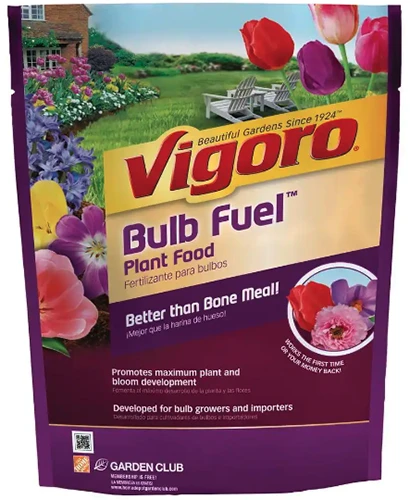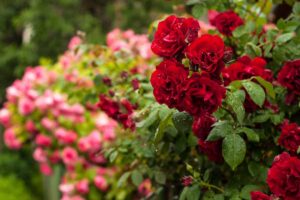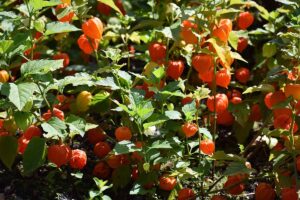One of the earliest flowers, grape hyacinths are a joy in the spring garden that multiply readily by bulb offsets and seeds, happily spreading throughout the garden – sometimes a little too happily, to the point where you might want to transplant them elsewhere!
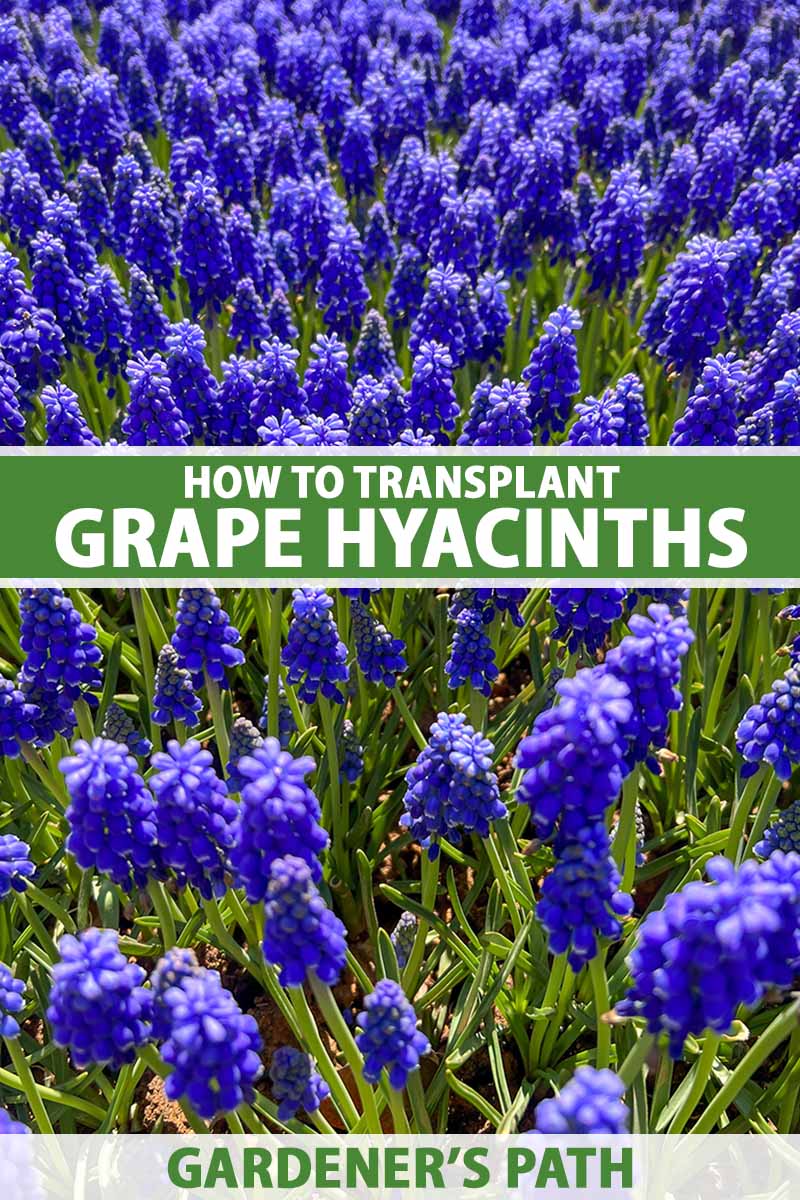
We link to vendors to help you find relevant products. If you buy from one of our links, we may earn a commission.
For example, due to their liberal self-seeding, they sometimes become established in areas where they’re not wanted – but would be welcome elsewhere.
And because of their eager, rapid growth, overcrowding can occur, reducing the number of flowers produced. Transplanting divisions is a good method for rejuvenation.
Or perhaps you just want to let them colonize a rock garden or naturalized area where they can spread freely.
Whatever your reason, transplanting grape hyacinths is easy. These versatile, tough little bulbs quickly establish new clusters of pretty, fragrant blooms.
Ready to learn what’s involved? Here’s what’s ahead:
What You’ll Learn
A Muscari Refresher
Grape hyacinths (Muscari spp.) are perennial bulbs with pretty flowers in shades of blue, mauve, pink, purple, and white, with strappy green foliage.
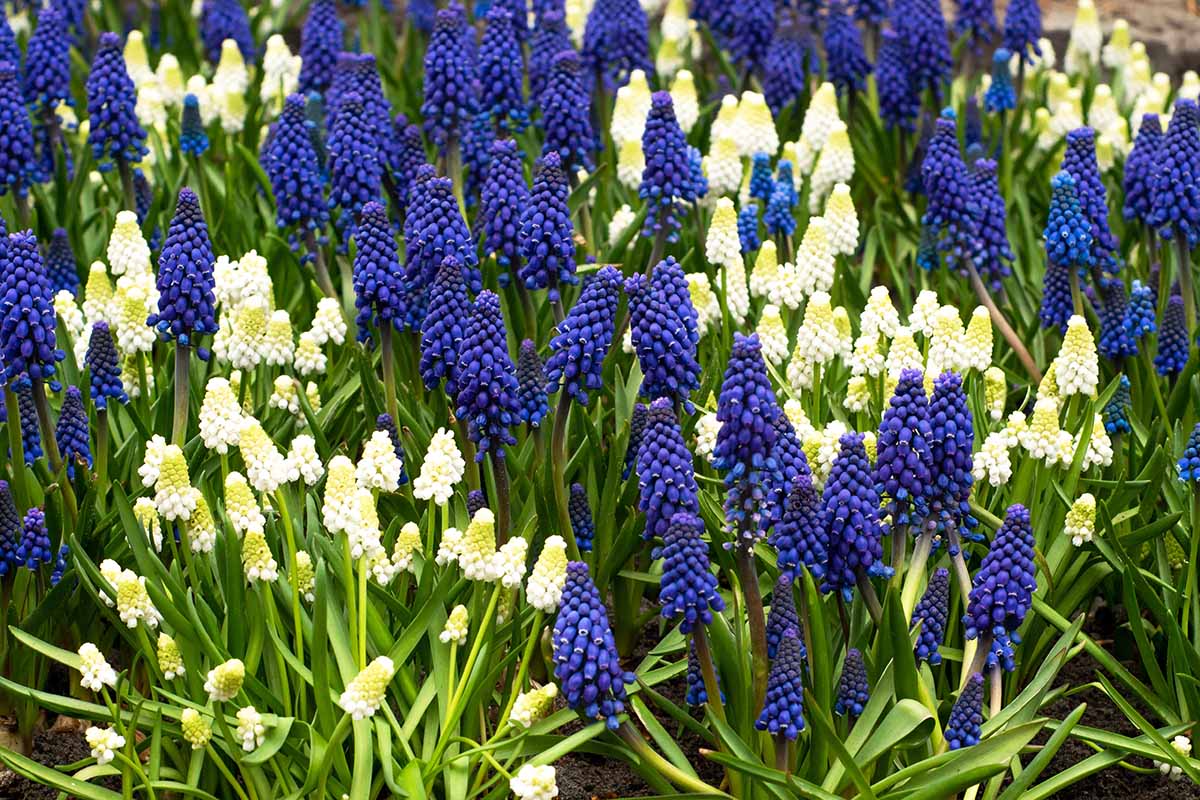
Most varieties exhibit good cold resistance and are hardy in USDA Zones 3 to 9, but some are hardy only to Zone 4.
Flowering in the cool temperatures of early spring, they bloom best in a full sun location, but they can tolerate light shade.
By midsummer, the foliage dies back entirely as the bulbs go dormant.
Some species, like M. armeniacum, send up shoots of foliage in late summer or early fall once cooler temperatures return – which makes it easy to determine where the bulbs are. But you’ll need to wait until spring before the leaves appear in most species.
Grape hyacinths require little in the way of fertilizer, and soil that’s too rich produces ample foliage but fewer flowers. Mix in some compost when planting, and they’ll be happy with that.
However, container plants benefit from a light annual feeding. In spring, sprinkle a slow release fertilizer over the soil.
Vigoro Bulb Fuel (9-9-6 NPK) is a recommended option that’s available at Home Depot.
Now that we’ve been over the basics, are you ready to start transplanting? Let’s take a look at the steps involved.
Pinpoint Flower Clumps
Unfortunately, with species that don’t send up early leaves, the disappearing foliage can make it difficult to pinpoint the exact location of your Muscari bulbs when it’s time to transplant them.
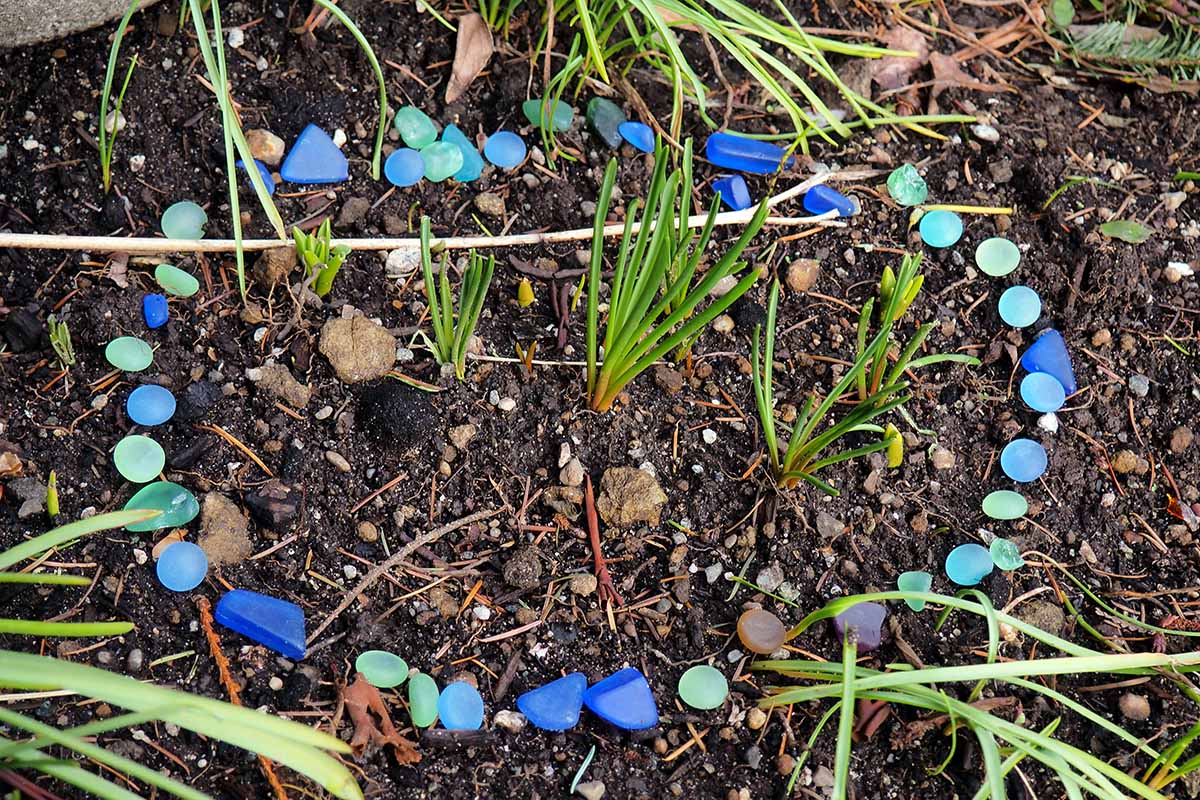
To ensure you’re digging in the right places, mark the clump outline after flowering with a rough circle of small pebbles, popsicle sticks, stakes, or a heavy cord that the wind can’t blow around.
Another option is to cover the clump with leaf mold or mulch until it’s time to move them.
Extend the outline, or the mulch, a few inches beyond the clump’s perimeter to ensure the bulbs and roots aren’t damaged when they’re dug up.
Pinpointing their location before the foliage dies back saves time, and reduces the risk of damaged bulbs, when you’re ready to transplant later!
When to Transplant
The ideal time to transplant grape hyacinths is in late summer or early fall, while they are dormant.

These little bulbs are so hardy they can be moved at almost any time of the year.
But moving them just before or while they are in flower can have a negative impact – buds can wilt or drop off, and flowering may be delayed until the following year.
If you do have to move them at any other time besides early fall, or if you are growing a species that has green leaves in the fall, leave the foliage intact and dig the entire clump out in one piece, taking care not to disturb the roots.
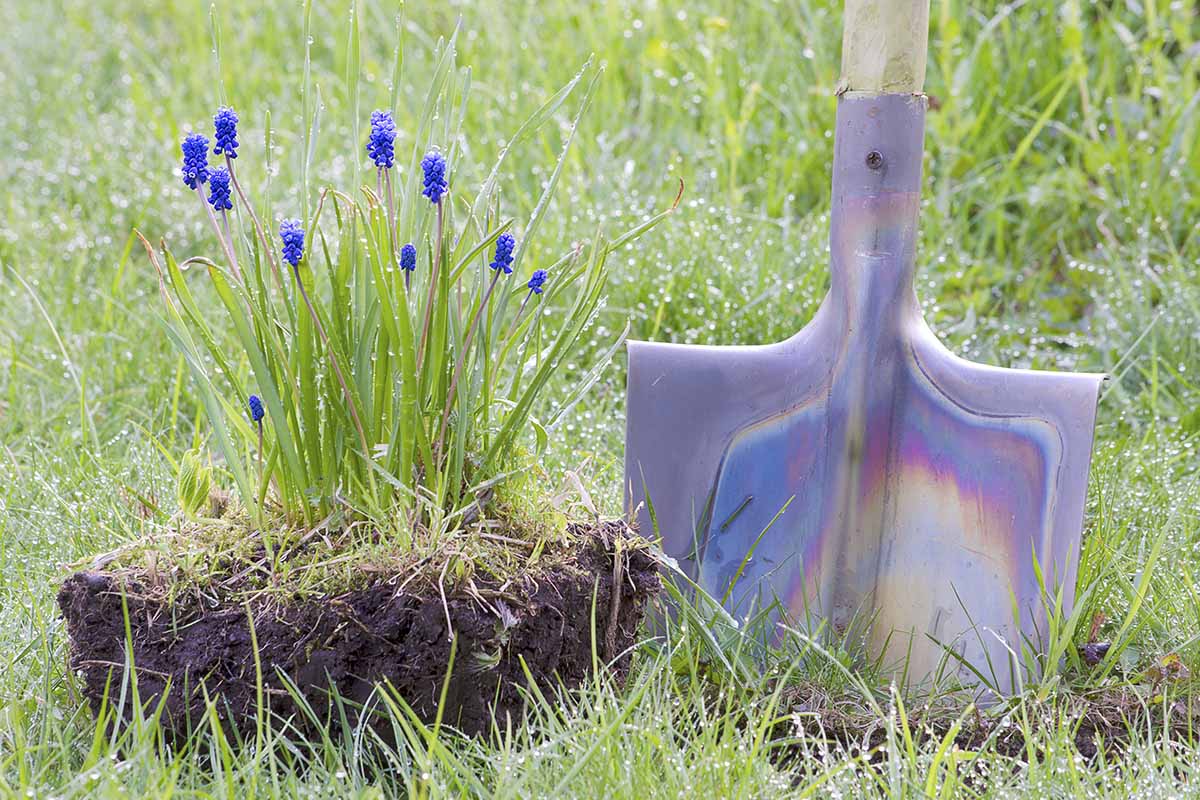
Keeping the foliage intact is important because it’s needed to complete the process of photosynthesis, which develops healthy bulbs for the next growing season.
How to Transplant
Before you begin, prepare the new planting site in a full to partial sun location by digging down six to eight inches to loosen the soil.
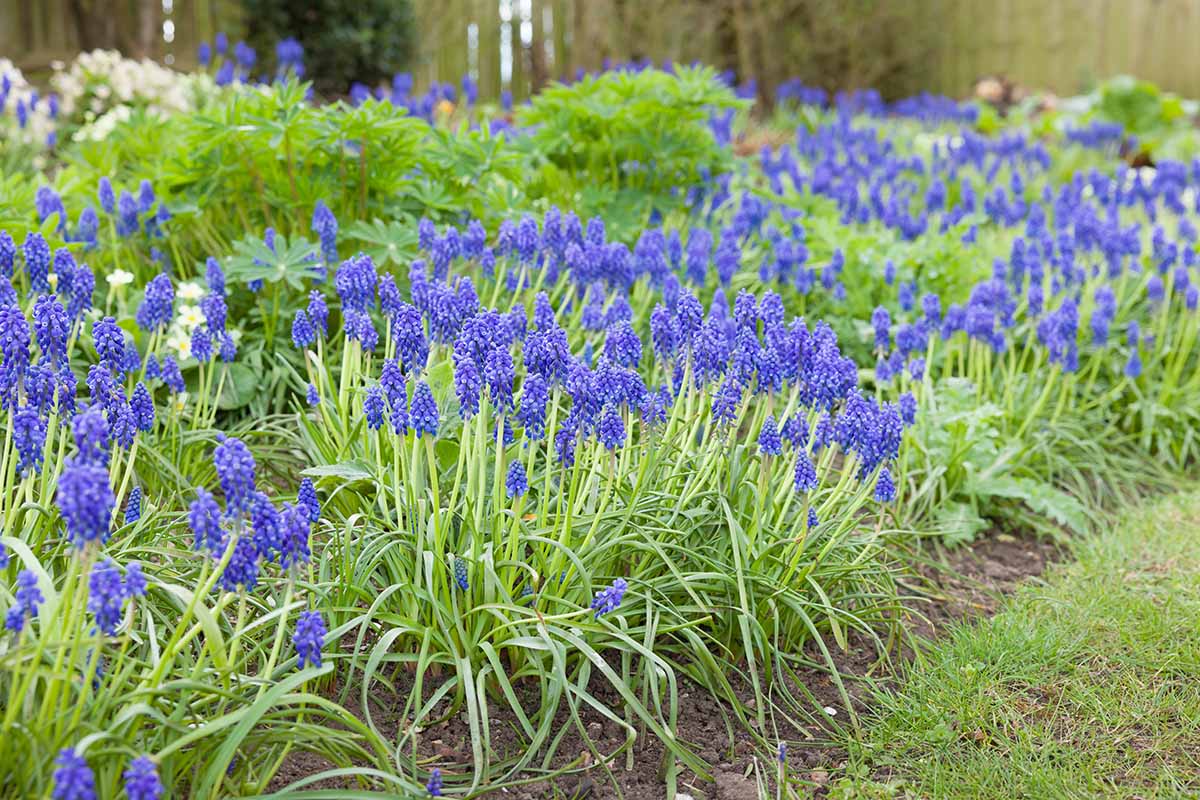
Enrich the soil with a shovelful of compost or well-rotted manure, mixing it in thoroughly.
Muscari prefer soil with a gritty or sandy texture, and it must be well-draining to avoid bulb rot.
If needed, amend the soil with a shovelful of granite chips, landscape sand, or pea gravel to improve drainage and texture.
Mix in one to two tablespoons of bone meal to ensure strong, healthy roots.
To transplant, locate the clumps you want to move and insert a hand trowel or small spade into the ground a few inches outside the root zone.

Work all the way around the clump, sinking the trowel blade four to six inches deep to get completely underneath the shallow bulbs.
For clumps that aren’t overcrowded and still flowering profusely, lift and transplant the entire clump in one section.
To replant, create a hole in the prepared soil of the same depth as the clump.
Nestle the clump into the loose soil so the surface is at the same level as the surrounding soil.
Backfill with soil around the clump edges and gently firm in place.
To divide or thin a clump of bulbs, use your fingers to tear it into even sections, gently pulling to release each piece from the whole.
Loosen and thin each section by gently prying and teasing the bulbs slightly apart.
Remove offsets and thin crowded bulbs, leaving each section semi-intact, with several bulbs and healthy roots. If foliage is present, leave it in place as well.
Replant as for whole clumps, in holes of an appropriate size in your prepared soil.
To transplant bulbs divided from a thinned clump, gently push them into the loose soil about two or three inches deep, or to a depth two to three times that of the bulbs’ height.
In areas with freezing winter temperatures, setting them a little bit deeper (three times their height) helps to protect them from freeze/thaw cycles. In regions with mild winters, twice their depth is sufficient.
Space individual bulbs about two inches apart for clumps that fill in quickly, and up to four inches apart where you want them to naturalize or spread slower.
Water the transplanted bulbs or clumps gently to settle in place.
For more details, check out our guide to propagating grape hyacinths.
Container Care
To move your Muscari into containers, use pots and planters with a drainage hole to ensure water moves freely through the soil and doesn’t become soggy.

I like to add a two-inch layer of drainage material to the pot’s bottom, such as broken pottery or pebbles.
Fill with humus-rich soil amended with landscape sand or granite chips to improve drainage and texture.
Mix in one to two tablespoons of bone meal for healthy root growth, then plant clumps or bulbs as described above when transplanting in-ground.
Water gently to settle in place then move containers into a full or partial sun location.
Welcome Home
Now that you’re clear on how and when to transplant grape hyacinth bulbs, you’ll find many welcoming locations throughout the garden for them to call home.
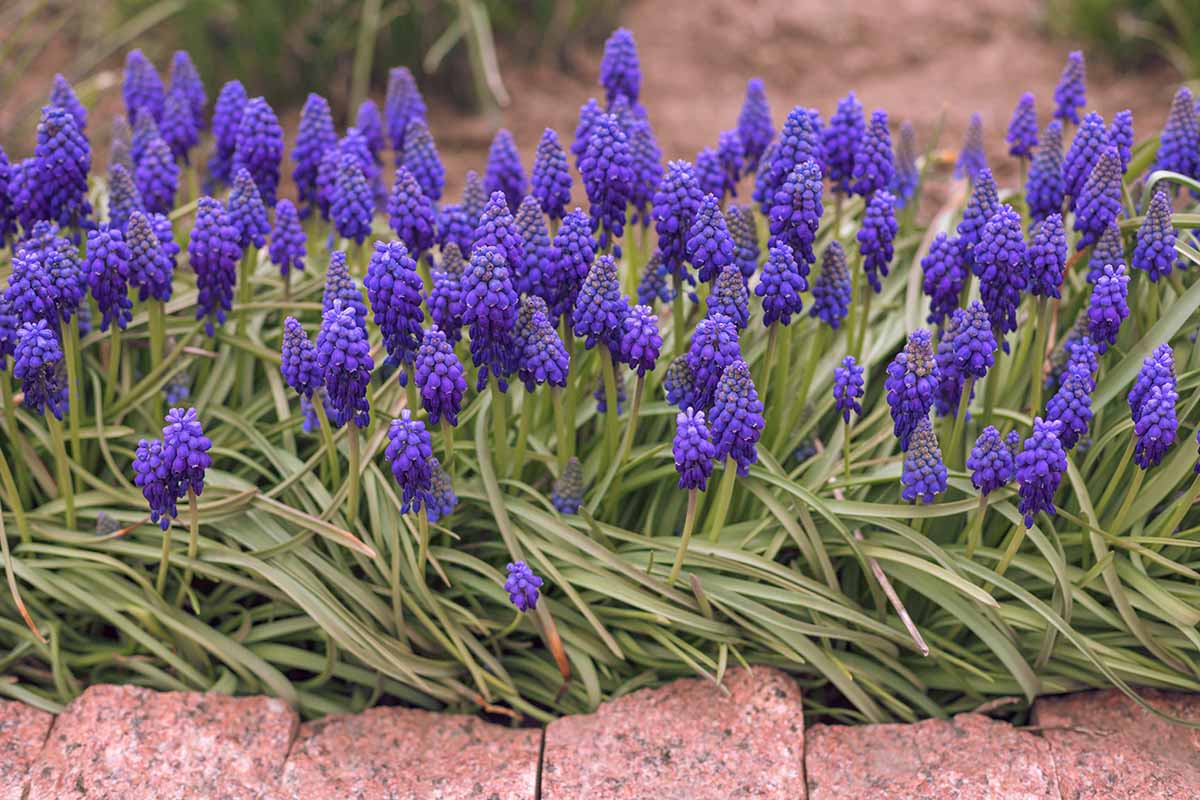
Try your new transplants in beds, borders, and containers or allow them to multiply freely in cottage gardens, rockeries, and naturalized or woodland settings – you’ll love it when their pretty flowers dot the early landscape!
Any questions about transplanting grape hyacinth bulbs? Drop us a line in the comments section below and we’ll do our best to answer.
And for more Muscari know-how, read these guides next:
